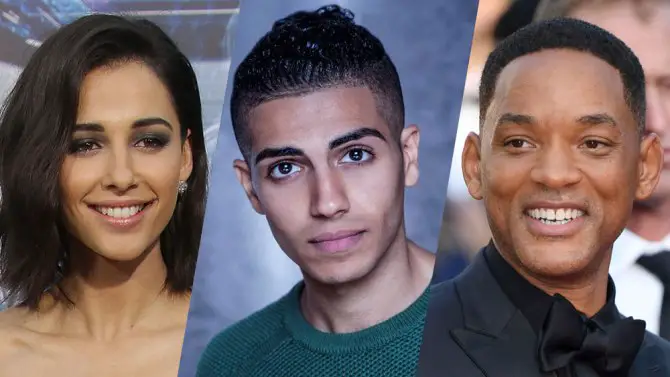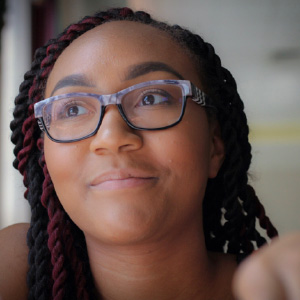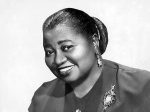The rise in Disney’s live-action remakes of past animated successes is no surprise, and it’s even an unspoken dream come true for many ’90s babies. With today’s steady advancements in technology, otherwise mythical characters can be brought to life in realistic computer-generated images (CGI), blurring the lines that once separated actors and animation.
In the last few years, Disney has released live-action versions of “The Jungle Book,” “Cinderella” and, most recently, “Beauty and the Beast,” leaving fans hungry for more realistic takes on their favorite childhood stories. Hints of live-action versions of “The Lion King,” “Mulan” and “Aladdin” have circulated the internet in the last month, but the news has been met with more than excitement; heated discussion to downright outrage has erupted regarding the representation of people of color in the film industry.
Guy Ritchie Takes the Heat
“Aladdin,” a Disney-animated film released in 1992 and set in mythical Agrabah, has been the subject of significant criticism due to the apparent failure at casting brown people for the live-action film. According to “The Hollywood Reporter,” director Guy Ritchie claims that the search for “a male lead in his 20s who can act and sing has proven difficult—especially since the studio wants someone of Middle-Eastern or Indian descent.”
Upon hearing about the extended “struggle” to find an actor to play Aladdin, the unofficial Twitter Casting Directors’ Association took it upon themselves to help Guy Ritchie find the perfect Aladdin. A woman named Jen Yang went as far as tweeting what everyone else was thinking: Bollywood is accessible, why not look there? Some fans were quick to dismiss the venture to Bollywood in hopes for an Arab cast, and rightfully so.
As I reflect on this mentality, it seems a dangerous one, considering that Bollywood is an Indian film industry that shares a similar obsession with fair skin that the United States is often criticized for, not to mention the fact that the characters from “Aladdin” were technically Arab. (Although, the location of the original animation isn’t clear, and many say it was set in China, which is all the more confusing.)
The distinction between Middle Eastern, South Asian, Indian, Arab, etc. is exactly why actors such as Avan Jogia, Dev Patel and Riz Ahmed were not chosen for the lead role, though each has been requested by fans. South Asian and Indian actors are not Middle Eastern; just because they are brown doesn’t mean they are ethnically interchangeable. The very fact that fans and media were so quick to jump on these actors is representative of not only the lack of diversity in Hollywood, but even more so of the ignorance Americans unapologetically live in regarding individuals hailing from the Eastern Hemisphere.
Jogia, who is of Indian descent, did in fact send an audition tape to Ritchie but, in the end, apparently declined the opportunity to play the role with this tweet.
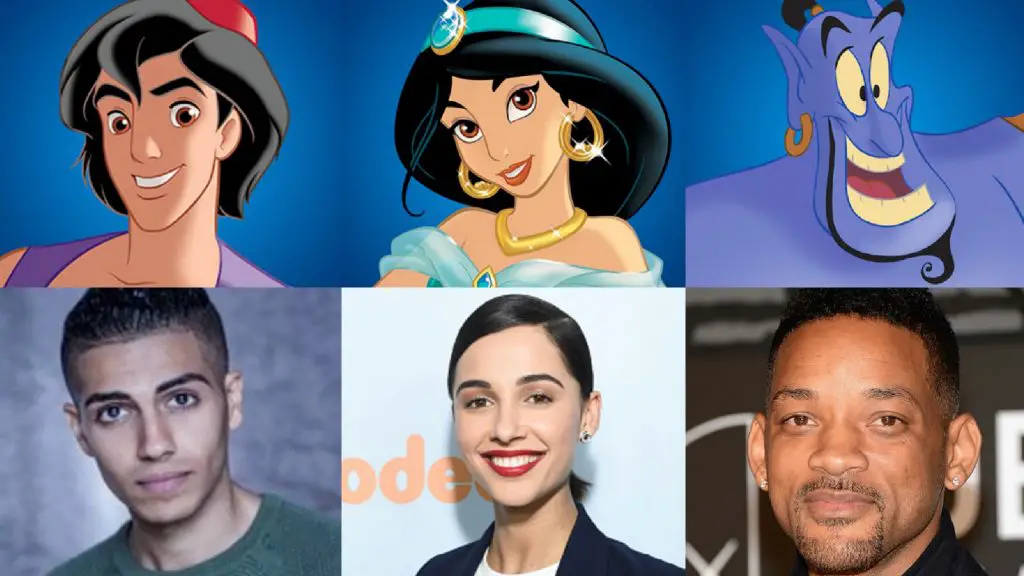
Following weeks of suspense, on June 15, 2017, Disney finally announced newcomer and Coptic Egyptian-Canadian actor Mena Massoud as Aladdin and English actress Naomi Scott, who is of Gujarati Indian, Ugandan and British descent, as Jasmine, as well as Will Smith as the Genie (originally voiced by Robin Williams in the 1992 animation).
Fans were not necessarily overjoyed with the casting decisions, but they were thankful for the accurate ethnic casting choice for Aladdin, which can’t be said for Jasmine. Scott, although Indian, is not only white passing, but also not Arab.
We may applaud Disney for putting in effort regarding Aladdin, but in Jasmine’s case, I’d say they defaulted and chose to cast anyone who appeared to be ethnic. While I was disappointed in Disney’s choice for Jasmine, I will say good on Disney for not completely white washing the cast in the way Hollywood infamously tends to.
White Washing in Popular Movies
White washing is the widely-practiced casting strategy in which white actors are chosen to play roles that call for people of color, which would include African-Americans, Asians, Hispanics, Native Americans, etc.
The practice of yellowface and blackface continued in the film industry on into the 1960s with Mickey Rooney portraying an angry Asian neighbor in “Breakfast at Tiffany’s” and Laurence Olivier playing the Moor in “Othello.” Progress has been made in the last few years with black actors being casted more frequently to fill black roles; unfortunately, other minorities still fall victim to white washing, especially individuals from the Eastern hemisphere. Here are some modern examples:
“The Last Airbender:” Sokka and Katara, who were depicted as Inuit on the television series, as well as protagonist Aang, are played by white actors, while members of the largely antagonistic Fire Nation are played by mainly Middle Eastern and Indian actors.
“Prince of Persia: The Sands of Time:” Jake Gyllenhaal, who is of Swedish descent, is cast as the lead, who is meant to be Middle Eastern/Persian.
“Ghost in the Shell:” The Japanese cult manga heavily based on Eastern philosophy was adapted for the US and utilized an almost completely white cast with Scarlett Johansson as the lead.
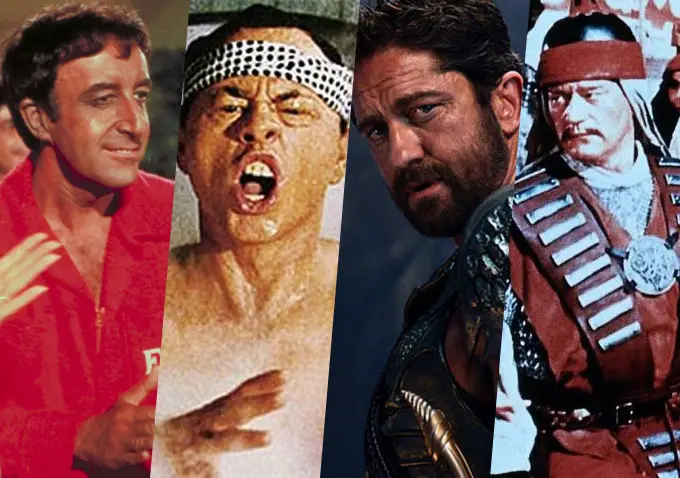
Why is whitewashing still prevalent in Hollywood? I believe there are two reasons: (1) Institutionalized racism still thrives in our society and (2) big names are believed to maximize profits, attracting larger audiences regardless of content quality, and since more than 90 percent of successful actors, producers and directors in Hollywood are white, it’s no surprise that minorities are being cheated of opportunities in film.
Although the industry has improved over the years—with a glaring shortage in Latinx, Asian and African American actors in comparison with their white counterparts—there is ample room for progress.
Due to Hollywood’s history with white-washing in film, fans’ reactions to Naomi Scott being cast as Jasmine are no shock to me. If the film industry can actively seek out brown people to portray Pakistani terrorists, then maybe they’re just being lazy when the opportunity to present Eastern residents in a positive light arises.
My hope is that Ritchie and the casting crew for “Aladdin” will consider the way Easterners have been portrayed in the past and that they will actively avoid continuing some of the dangerous stereotypes perpetuated in the original animation, such as how Aladdin, Jasmine and the Sultan all spoke with American English accents while all the bad guys spoke with foreign accents, not to mention how the lyrics of the opening song “Arabian Nights” are still problematic after being edited in 1993 by request of the American-Arab Anti-Discrimination Committee (which you can read about here), most notably due to the lyric that says “it’s barbaric, but hey, it’s home” and the way it portrays the foreign land of Agrabah as barbaric because of its lack of European influences.
While Ritchie has displayed a level of social and cultural awareness by choosing Mena Massoud as Aladdin, with the choice for Jasmine, fans are concerned about the direction this film will take and its potential to recreate the cultural insensitivity and inaccuracy of the original animation.


